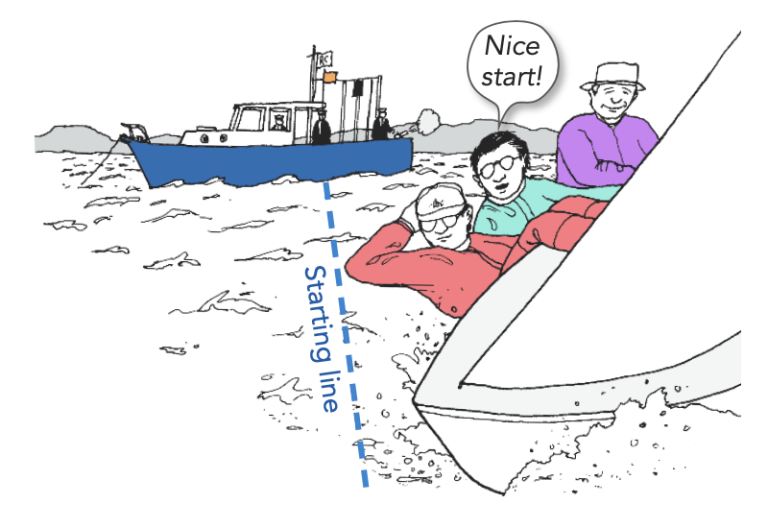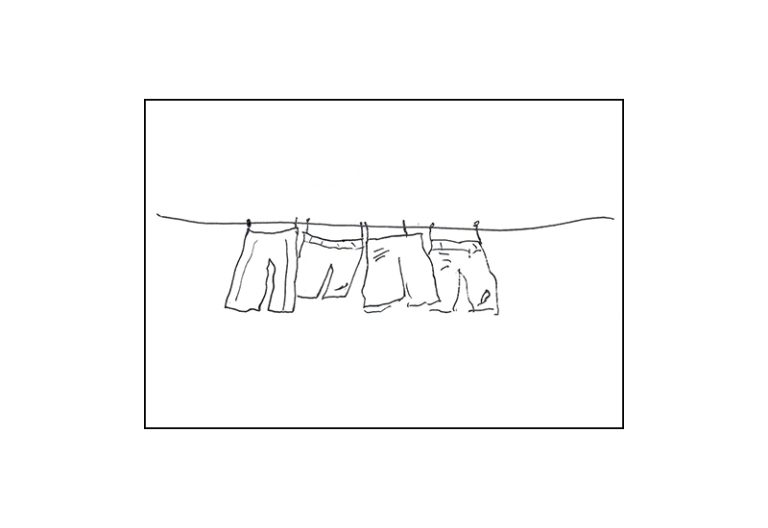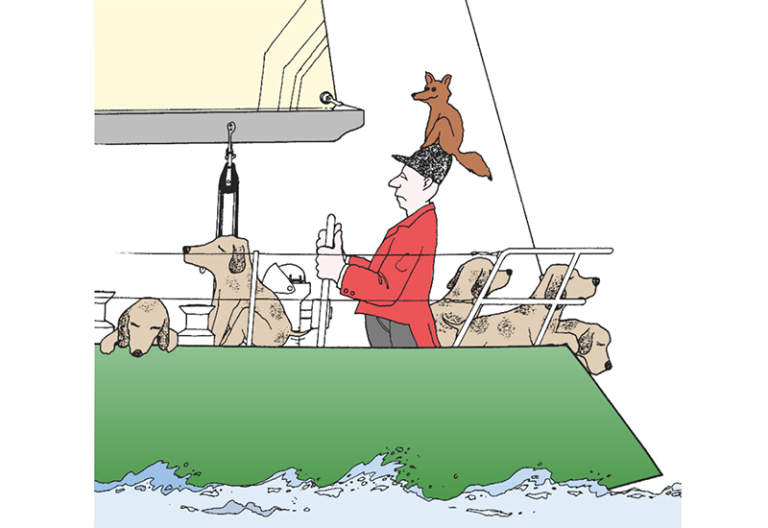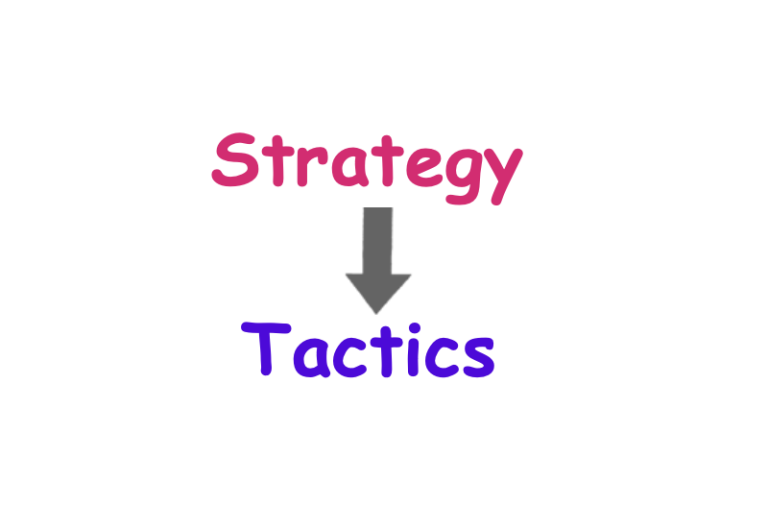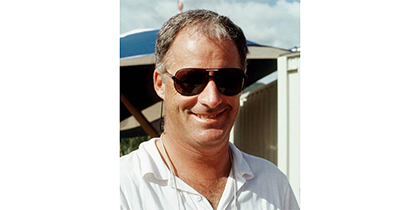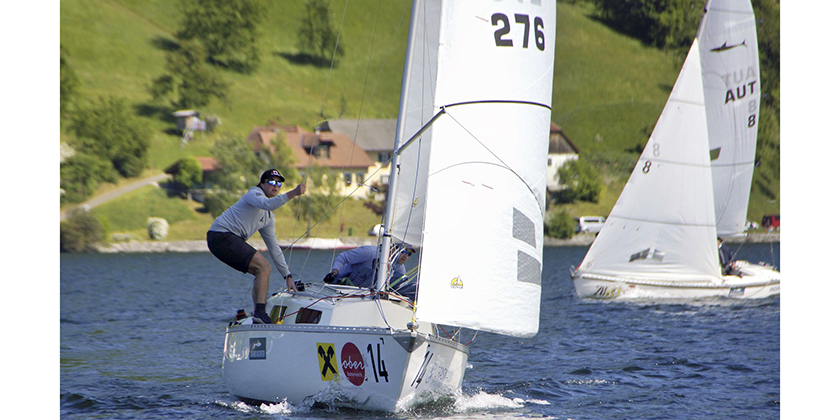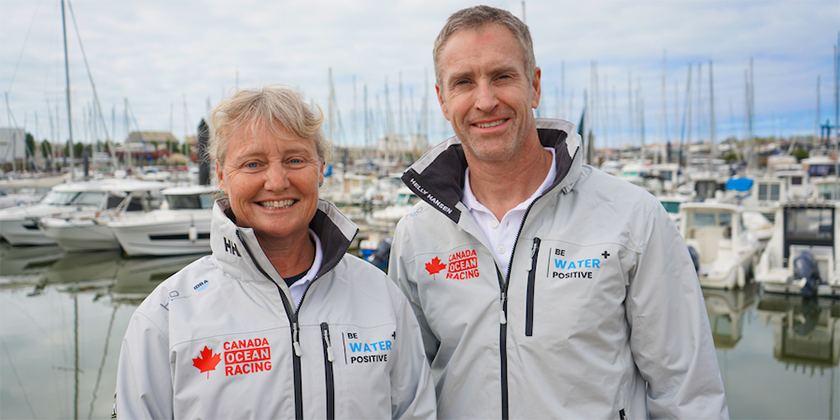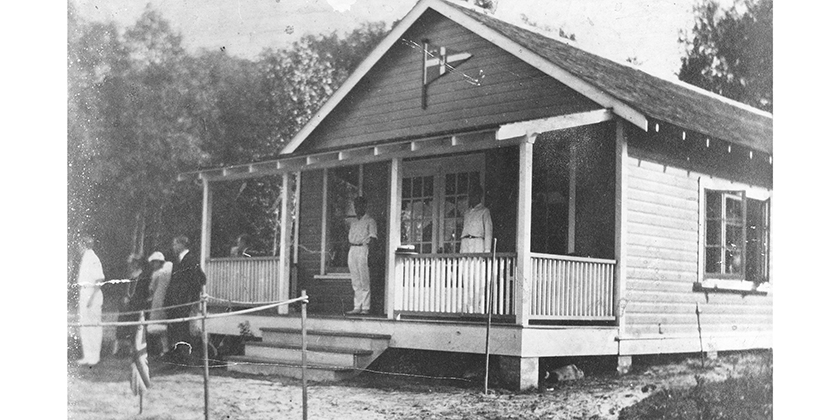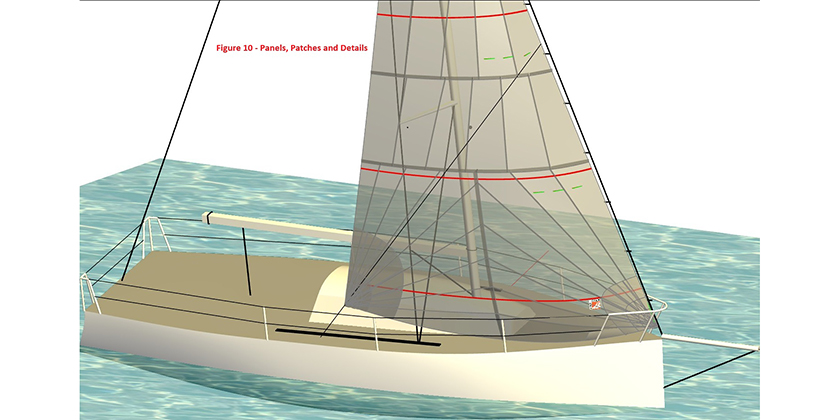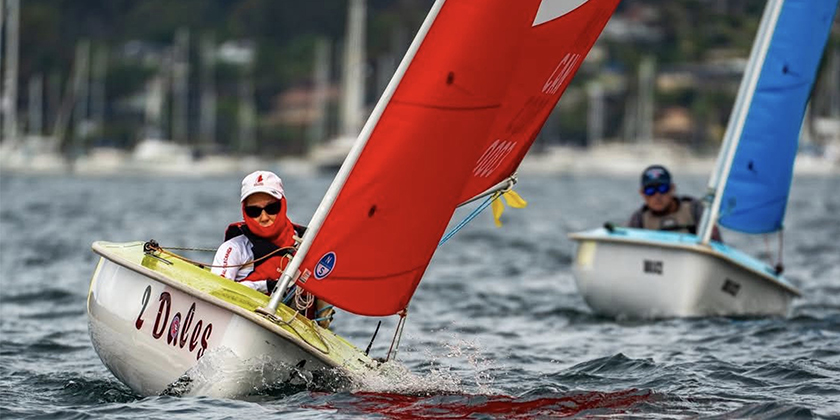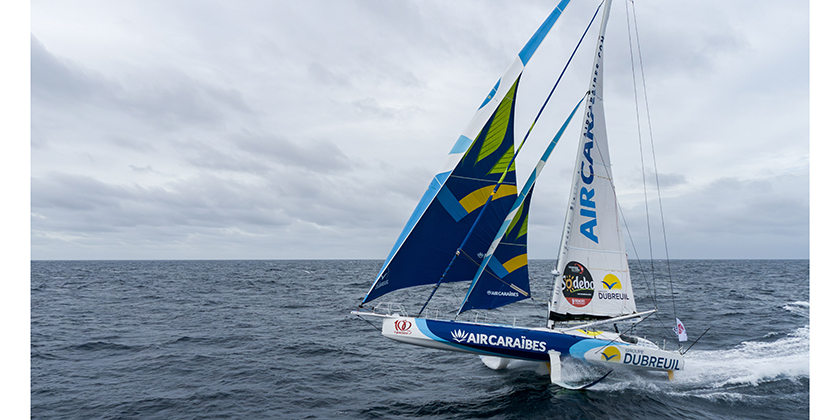Speed & Smarts: Familiar Layline Dilemmas – Part 2
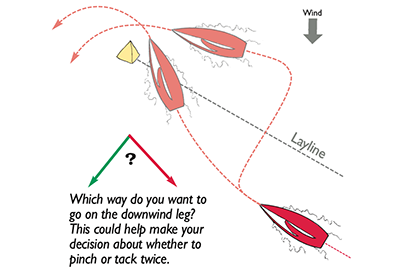
May 31, 2023
This issue we conclude our five-part look at Laylines. There’s always more and more, but next week we move on. You can catch up on this topic:
A layline seems like such a simple thing – a dotted pathway on the water that leads you straight to the next mark. But dealing with laylines while you are racing is not always so straightforward. When sailors approach the edges of the course, too often they overstand the next mark, understand it, miss wind shifts, get stuck in traffic or end up in bad air. As a result, it’s common to see boats make race-winning gains (and race-losing losses) near laylines.
If you want to be successful at managing laylines you need several skills. The first is simply knowing where the laylines are. This can be tricky because laylines move constantly as conditions change.
4. Pinch up to the mark or tack twice?
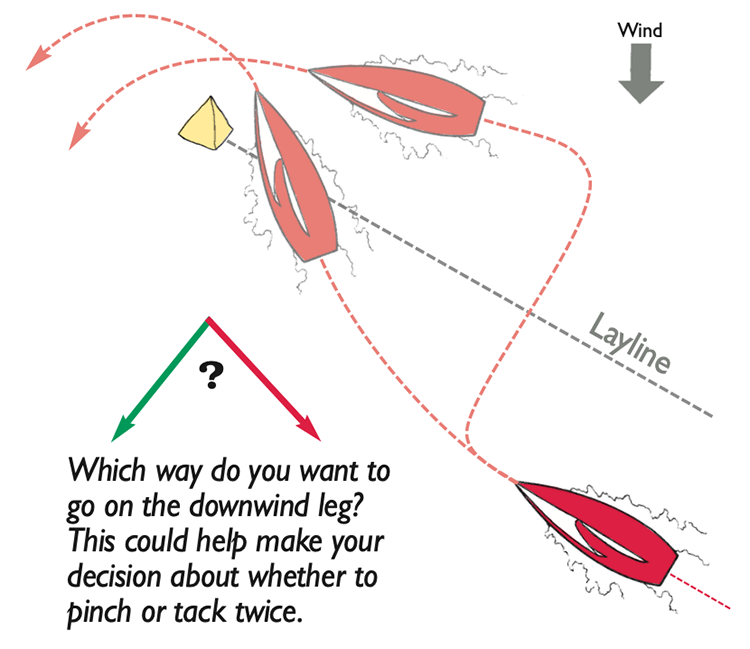
Here’s another “Tack twice?” conundrum. Sometimes you approach the windward mark a little below the layline – you can still fetch the mark on starboard tack, but you have to make a choice – either pinch up slowly around the mark, or do two quick tacks.
The best solution depends on several factors:
- How slow will you be if you pinch around the mark? If you can carry your momentum and coast around the mark, that’s a lot better than if you have to slowly squeeze past it.
- What is the cost of two quick tacks in your boat in the existing conditions? If you’re sailing a dinghy in moderate air and flat water, this option is a lot less painful than down speed tacks in a keelboat in light air and chop.
- Where do you want to go on the next leg? If you are happy to stay high on starboard jibe on the run, it’s not so bad to be slow at the mark. But if you want to do a jibe set or exit low on starboard jibe, you really need to round the mark with speed; in that case two tacks may be your better option.
5. Tack on the layline or on the overstanding boat?
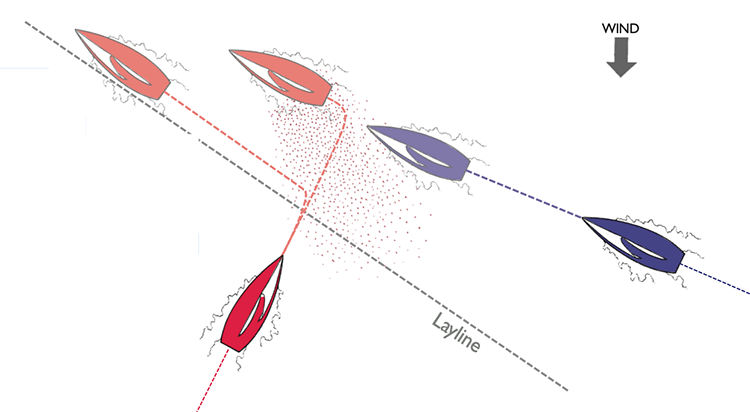
Here’s a tough one: As you approach the layline you see a boat that is slightly behind you and overstanding the mark by a couple or a few boat lengths. Should you tack on the layline or go a little farther and tack just in front of the other boat?
The benefit of tacking on the other boat is that they will not prevent you from tacking if you mis-judge the layline; you can also put them a little farther behind you at the windward mark. However, if it’s windy or if they are overstood by very much, your bad air will not really hurt them.
The downside of tacking on the other boat is that you’ll lose a few lengths to every other boat in the fleet. The rule of thumb here (even in match racing when you are worried only about the other boat) is that it’s best to tack on your layline. Go just far enough to be sure you will fetch the mark and then tack, avoiding the temptation to go as far as your competitor. This is fastest and may earn you some goodwill too.
6. There’s a crowd at the mark.
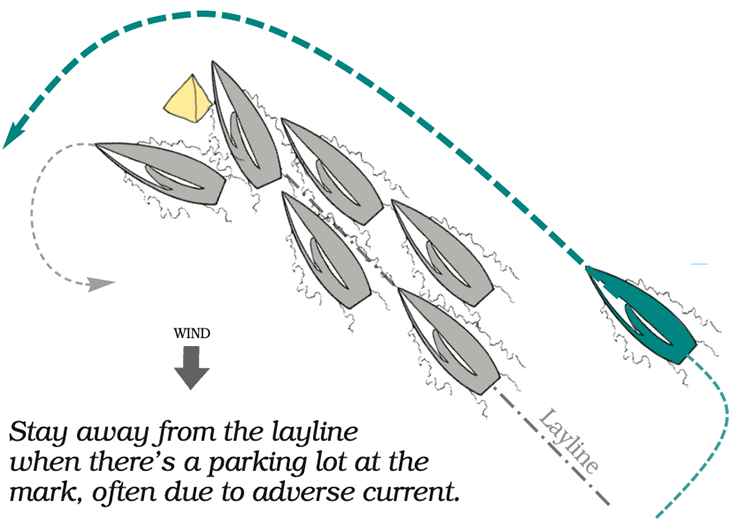
When all the boats seem to arrive at the windward mark together, that’s a good time to avoid this area. Crowded mark roundings involve high risk and the chance (or even the likelihood) of big losses. Instead of making the perfect layline call and sailing straight into trouble, go past the layline and overstand.
Though this may cost you some distance, sailing around the fleet is a good insurance policy.
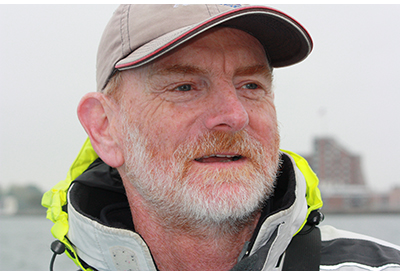 Dave Dellenbaugh is the publisher, editor and author of Speed & Smarts, the racing newsletter. He was the tactician and starting helmsman on America3 during her successful defense of the America’s Cup in 1992 and sailed in three other America’s Cup campaigns from 1986 to 2007. David is also two-time winner of the Canada’s Cup, a Lightning world champion, two-time Congressional Cup winner, seven-time Thistle national champion, three-time Prince of Wales U.S. match racing champion and past winner of the U.S. Team Racing Championship for the Hinman Trophy. He is currently a member of the US Sailing Racing Rules Committee (and was its chairman from 2005-2008).
Dave Dellenbaugh is the publisher, editor and author of Speed & Smarts, the racing newsletter. He was the tactician and starting helmsman on America3 during her successful defense of the America’s Cup in 1992 and sailed in three other America’s Cup campaigns from 1986 to 2007. David is also two-time winner of the Canada’s Cup, a Lightning world champion, two-time Congressional Cup winner, seven-time Thistle national champion, three-time Prince of Wales U.S. match racing champion and past winner of the U.S. Team Racing Championship for the Hinman Trophy. He is currently a member of the US Sailing Racing Rules Committee (and was its chairman from 2005-2008).
You can subscribe to the Speed & Smarts newsletter HERE.

